What happens when the legendary Colt company employs two of the biggest names to exist in the AR-15 world to produce a pistol?
Well, you get the Colt All American 2000, a gun very few of you have likely heard of.
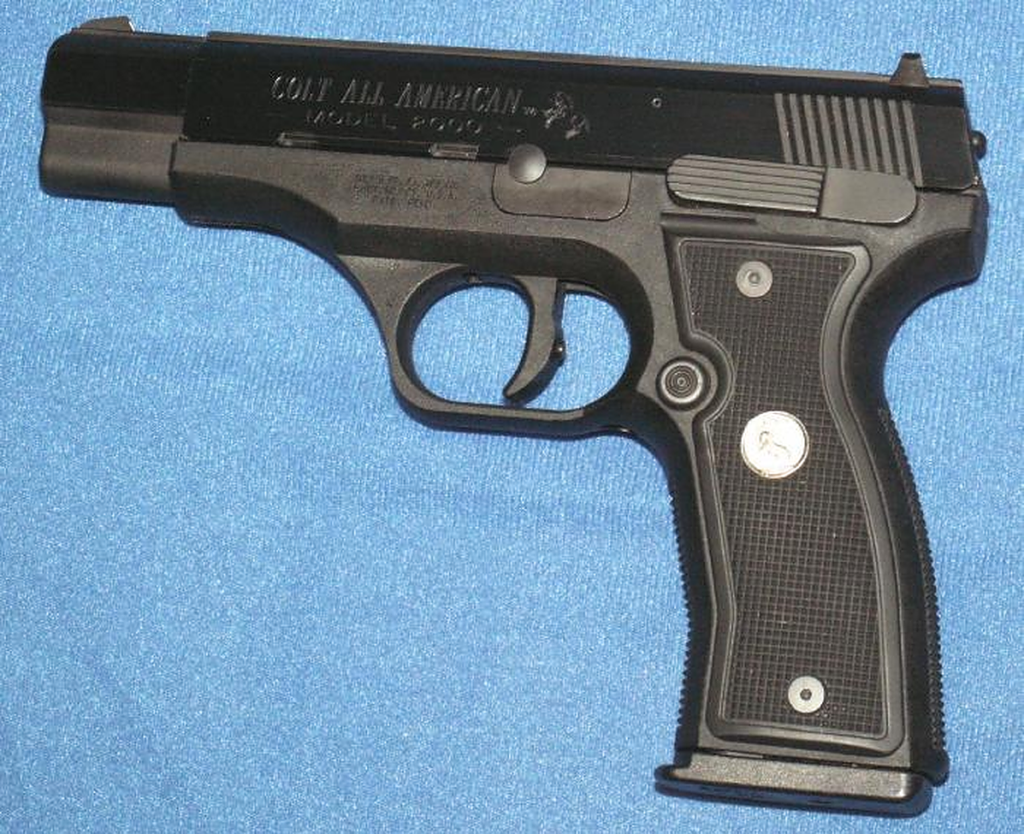
Reed Knight of Knight’s Armament and Eugene Stoner, the creator of the AR-15, worked together to develop the pistol which would become the Colt All American 2000.
Even with two heavyweights and Colt backing them, the All American became a dumpster fire somewhere between the design and the manufacturing process.
So let’s take a look at this little-known pistol and find out what went wrong…
Table of Contents
Loading…
The Beginning
Reed Knight and Eugene Stoner went to work in 1990 to produce a pistol, which was somewhat new for the two AR makers. They designed the pistol and made some initial prototypes, and Colt later decided to purchase the design from Stoner and Knight.
Colt needed a modern pistol for a modern world.
In 1992, that meant a 9mm handgun with a polymer frame, a striker-fired action, and a double-stack magazine. Colt was only producing 1911s and revolvers in terms of pistols, and they were suffering for it.
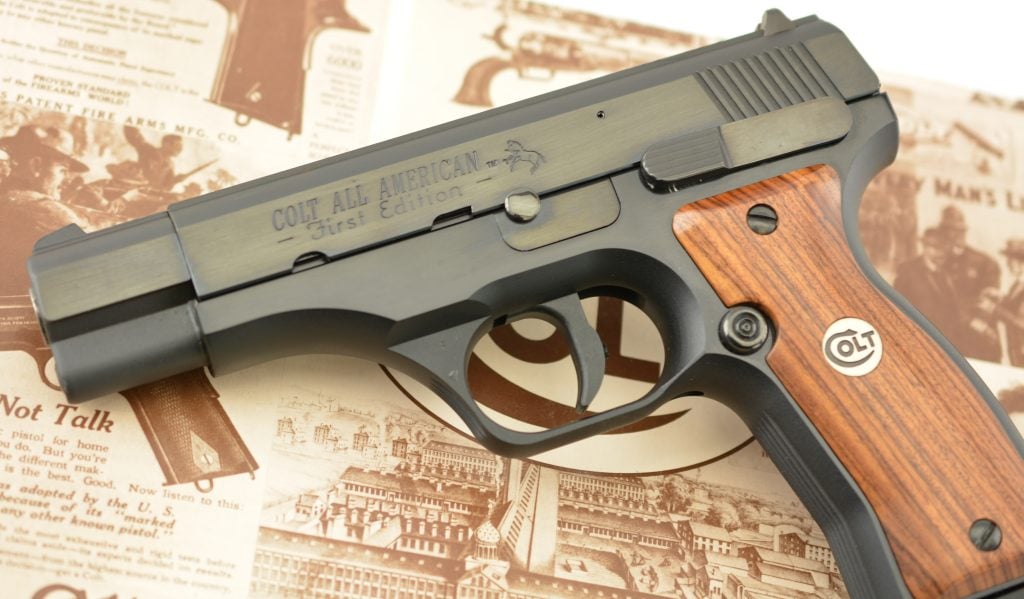
While the Colt All American started life with a polymer frame, metal frame models also exist.
Beretta and Glock were taking over a chunk of that market, and Colt desperately wanted a little piece of that pie.
Colt even named the gun the All American to try and dunk on those European companies who were dominating the market. They saw the Colt All American 2000 as a means to achieve a new market share.
Inside the All American
The Colt All American was an odd duck or an innovative swan, depending on how you view it. Most would say it’s an ugly gun with a very…interesting aesthetic.
The All American used a rotating bolt system that was relatively novel for the time. Sure, guns like the older Steyr 1912 utilized a similar design, but it wasn’t common in 1992 by any means.
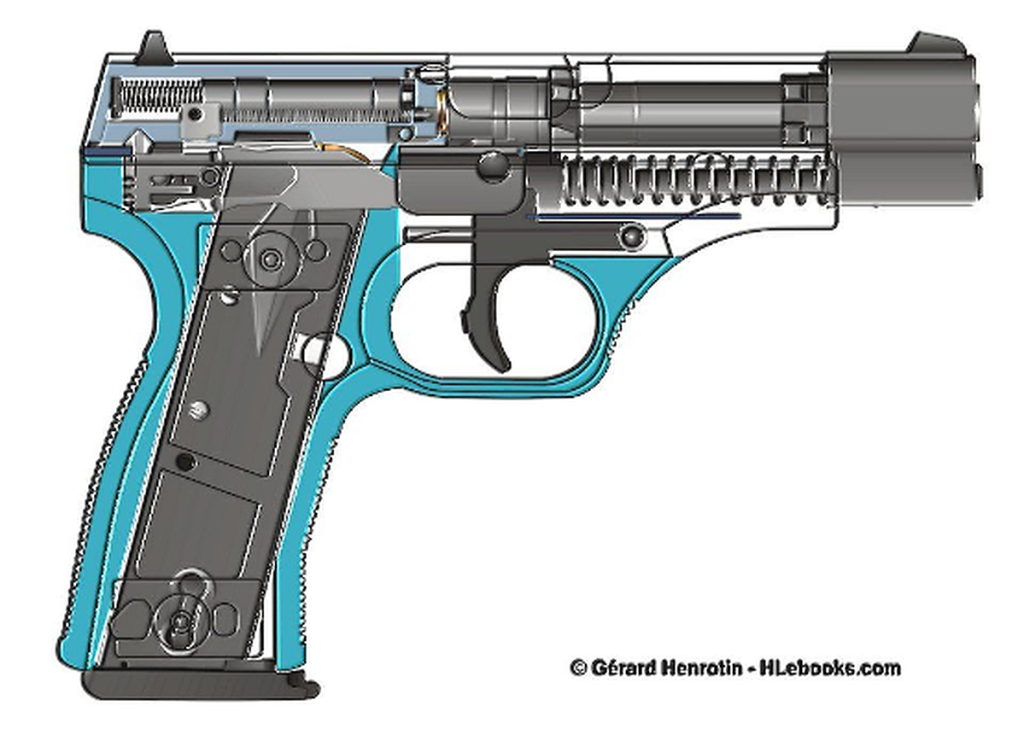
The barrel and slide lock together for a short period, just the first few millimeters of travel. They then unlock, the barrel rotates, the locking lugs unlock, and the slide cycles rearward to eject the spent cartridge before coming back forward to pick up the next round.
Reed and Stoner used roller bearings inside the trigger assembly. The idea was to provide a smooth trigger pull of roughly 6 pounds. However, Colt’s lawyers didn’t like having a trigger that light.
They advised doubling the trigger pull to 12 pounds, which kind of killed the smoothness of the roller-bearing trigger. I guess it could’ve been worse, but crap, they would have had to really try hard to be worse.
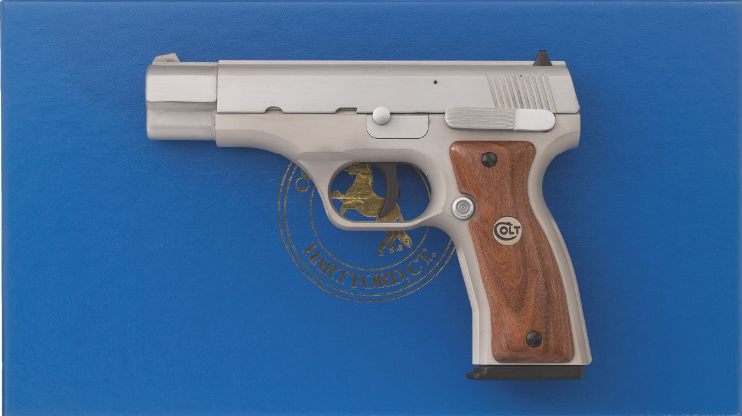
The weapon already used a true double-action-only trigger.
Most modern striker-fired guns use a partially cocked striker that is only technically a DAO trigger. The All American’s true DAO meant a long travel backed by a heavy 12-pound trigger pull.
However, the true DAO trigger meant the gun had second-strike capability in the event the round didn’t fire the first time. The double-stack magazine also gave the shooter 15 rounds of 9mm, which brought it into the modern era of firearms design.
So What Went Wrong?
As you’d imagine, the long, heavy trigger pull wasn’t desirable. However, a lousy trigger won’t necessarily sink a gun — what will sink a gun is an unreliable design.
Colt All American pistols were notoriously unreliable and often failed to make it through an entire magazine without a malfunction.
Additionally, in 1993 they were recalled due to a safety issue where the guns could fire when dropped or even struck hard.
Accuracy was a major issue as well. Its long double-action trigger combined with a kooky front sight design did nothing to help in that department. The front sight sits on the barrel bushing, and as the barrel bushing wears, the lockup becomes a little loose.
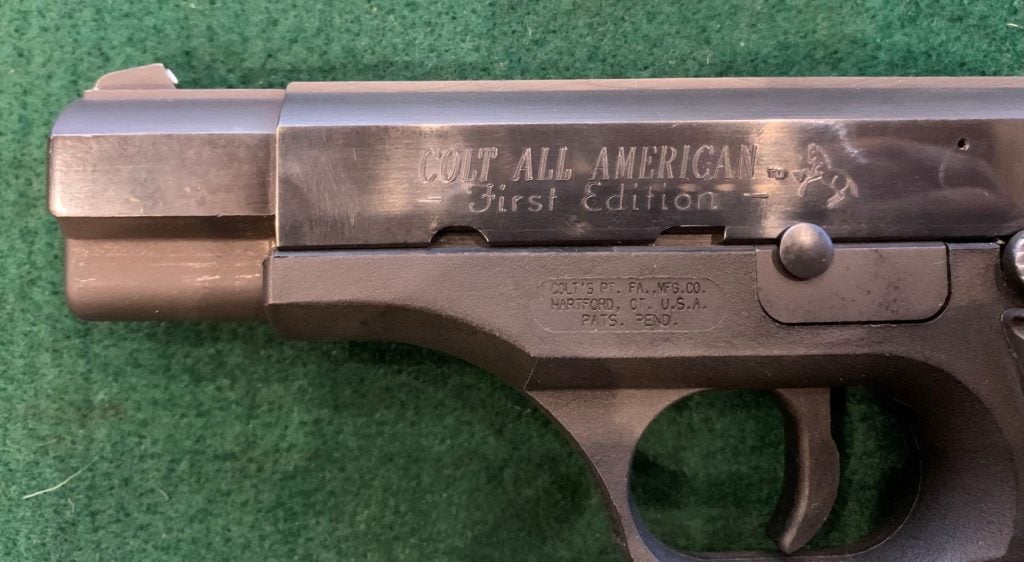
So when the barrel bushing becomes loose, the sight drifts.
There also seemed to be further mechanical accuracy problems. Mike Irwin of American Rifleman claimed the gun fired groups as big as 25 inches at 25 yards.
Final Thoughts
When you look at the odd design, the terrible trigger, horrid reliability, and abysmal accuracy, it’s no wonder the All American only saw two years of production.
Colt was embarrassed by the weapon and rightfully canned the design. Reportedly the design almost bankrupted Colt.
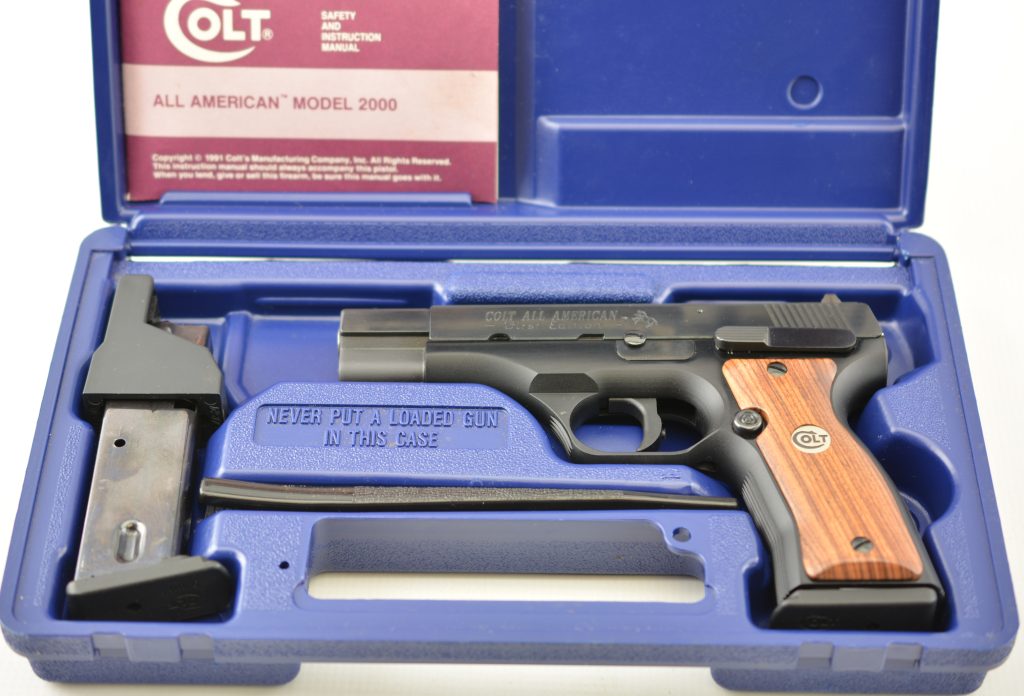
Colt historian Rick Sapp called the All American “one of the most embarrassing failures in the company’s history.”
Does anyone have experience with the Colt All American 2000? If so, let us know what you think below. Interested in other failed designs? Then check out our article on What Happened to the Hudson H9.

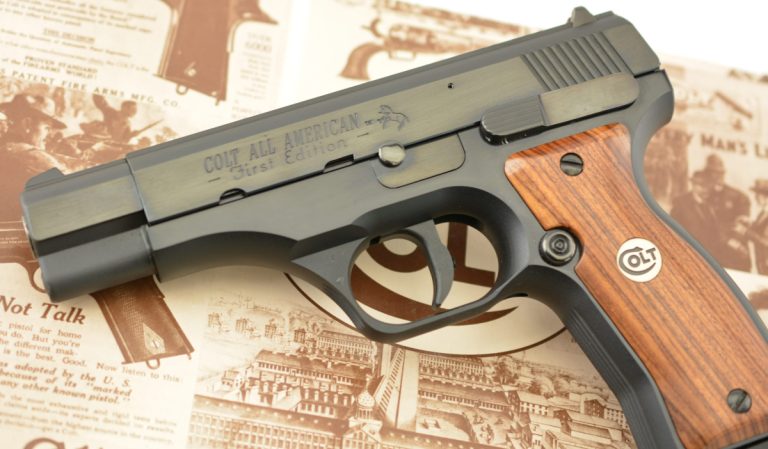







6 Leave a Reply
I own Colt 2000 first edition (with high-polished, blued aluminum frame). It's my favorite firearm. It's aesthetically very pleasing. (Those who claim it's an "ugly gun" are either badmouthing it or have no aesthetic taste.) Its make and finish - unlike those of Glock and many other popular currently made semiautomatics - are exquisite.
I never experienced any reliability issues. I keep it clean as my all other firearms.
Of course, DAO makes it more difficult to shoot precisely "out of the box" than a single-action gun, but with an hour or so of training, a fairly good shooter will have no problems with placing 2 - 3 in. groups at 25 yds.
I suppose, the lousy shooters just blame the gun for their own lack of shooting skills.
The only thing that I would change in my 2000 is the trigger pull. I would hypothesize that the lawyer that "ordered" Colt its increase from 6 to 12 lbs might have an interest in making the gun less desirable.
In my opinion, Massad Ayoob's grossly unfair and flawed review should be credited for bad reputation that Colt 2000 had; he and Colt's lawyer sunk this great gun.
I've been tossing around the idea of a "Make The Colt All American Great Again" project. Dropping trigger pull back to 6 lbs, threaded barrel, optics mount and shortening that trigger pull. I've owned 2 of these guns and feel like there was a lot of wasted potential there.
I purchased the AM 2000 first year of product availability. Based on magazine reviews of the time, I ordered it sight unseen from my local gun shop. It was a polymer frame model and was $35.00 more than a Glock 17.
It was a large pistol a medium to long reach to the trigger. This along with the heavier than typical trigger pull made it less desirable than the Glock pistol trigger.
The entire trigger assembly could be removed as a whole unit when disaaaembling the gun. the four little roller bearings(looked like toy Matchbox car wheels) would roll between and upper and lower rail to keep the movement of the trigger pull in line. The trigger felt a little strange. Most handguns have a trigger that pivots on a captive pin of some sort so the actual trigger rotates through an arc. this can alter the weight of the trigger pull as the trigger has cam leverage that can slightly change through the length of the trigger pull.
The Colt pistol’s arrangement had the trigger moving in a direct strait line from front to back and didn’t feel natural. Also if any debris or grease/oil got on the rollers they wouldn’t roll, but jam up and slide on the rails. This gave consistent trigger pull made weight unless the gun was kept very clean.
I sold it six months later and took a 50% loss as there was no market for the gun.
I had a federal gun dealer license in the 90's and sold several of them. Never had a complaint. I still own one. Love it. Fits a large hand comfortably. Tear down is a breeze. I also sold the Colt kit to change the barrel length to 3 1/2 inches which people liked. Trigger is quite different but at that time alot of people were buying guns for close work not target shooting. It feels very balanced in my hand. I did have a problem with Blaze ammunition not chambering the round a time or two.
I have Colt 2000 First Edition with aluminum frame. It is exquisitely crafted gun with ergonomic design. The quality and finish is visible better than on my special edition Colt 1911 made about the same time as my 2000.
It operates like a DA revolver which means no safety levers to remember about while in emergency. The pull is similar like in DA revolver but - unlike revolver - it stays the same during the entire trigger travel.
I had no problems whatsoever with this gun. And accuracy is as good as any other semiautomatic. I find that shooters who are not very good at target shooting tend to blame the gun for their substandard performance.
Also, the rollers on the trigger are self-lubricating. Putting oil on them will likely lead to trigger malfunction.
I am aesthetically very discriminating and I find this firearm aesthetically pleasing. The myth that it was ugly gun was probably invented by a guy who wanted Colt to lose money.
And when I compare my 2000 to today's semiautomatics I am so happy that I bought it when it was available.
The only thing that I missed was a short barrel kit.
I was the Business Unit Manager who had the responsibility of running the production of the AM2000. In 1993 we stopped the AM2000 production but before doing so my unit Engineering Manager and QC Manager convinced me to produce 5 short models (13 round mag and 3 1/2' barrel) with nonpolymer receivers. S/N 00001 - 00005. I have the last production gun (S/N 00005). It has never been fired outside of factory test firing. I might be interested in selling it for the right price.